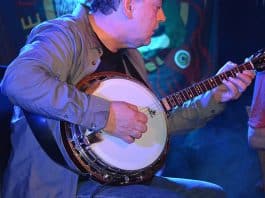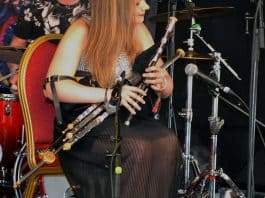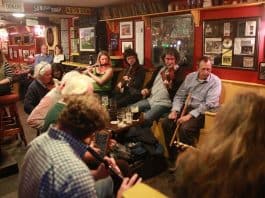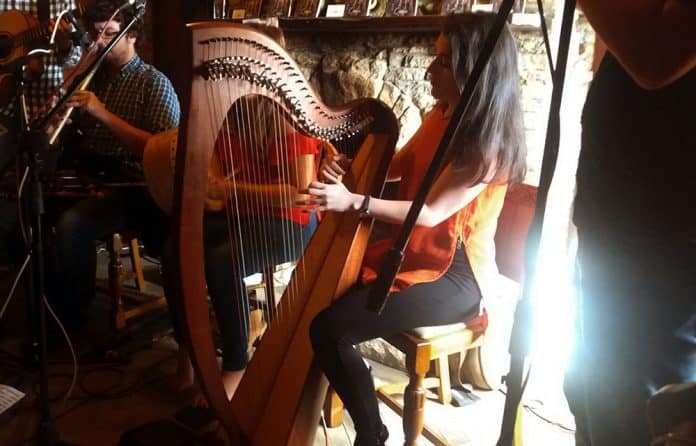
The Celtic Harp is known by a number of names, including the Irish, the Folk, and the Lever. It is indigenous to the following countries, where it has a name in each dialect (noted in parenthesis): Brittany (‘telenn’), Scotland (‘clarsach’), Wales (‘telyn’) and Ireland (‘clairsech’). This large, triangular-shaped, wire-strung instrument is notoriously difficult to master, and as such is played by instrumentalists of the very highest order. It is synonymous with the Celtic ruling elite, as in those days it was regarded as an instrument of high status. And, of course, it is the national and very evocative emblem of Ireland, a symbol that instantly brings to mind the Emerald Isle and the wonderful Irish traditional music that is so associated with it.
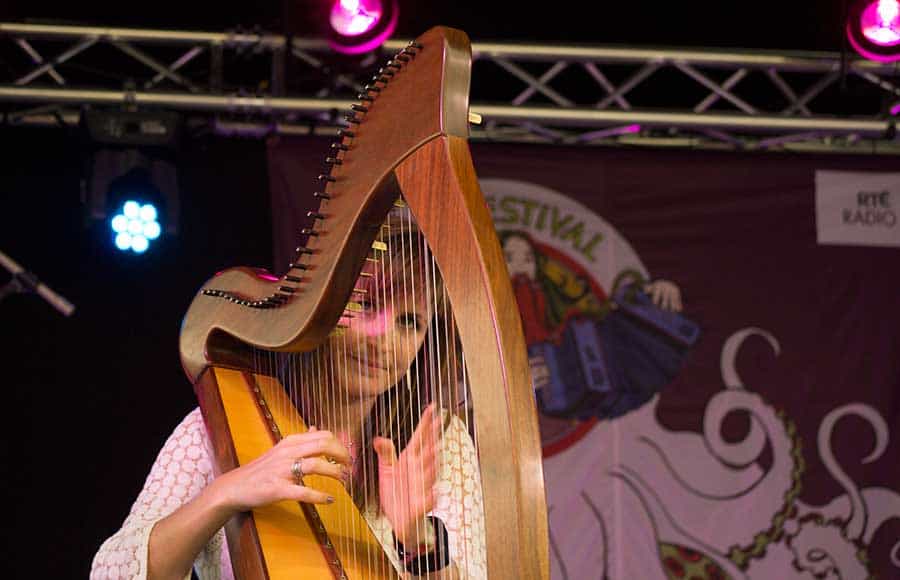
The Harp in Celtic Culture
The Celtic harp is intimately associated with the Celtic culture and Irish Traditional Music from medieval times right up to the present day. Its history can be traced back for literally thousands of years, and it has played a pivotal role in the culture, religion, politics and society of the Celtic people. It continues to do so even now.
History of the Irish Harp
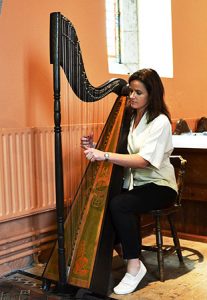
The ancestry of the harp is much discussed among experts, and no one definitive consensus has yet been reached. The very first Gaelic instrument was called a ‘cruit’. While the design is not wholly clear, it is thought by some to have been the precursor to the Irish ‘clairseach’ (in Scottish Gaelic ‘clarsach’) that described the triangular-shaped instrument that eventually supplanted the cruit. During medieval times, this wire-strung instrument remained in high demand all over the Gaelic world and was intrinsic to courtly life. Yet by the middle 1700s the fiddle had largely supplanted the harp, which almost sounded the death knell for the instrument. However, by the early 1800s it was thankfully undergoing something of a revival in Ireland.
Origins of the Celtic Harp
Three out of the four most ancient instruments that have survived to the present day date from the 15th century. These include the Trinity College Harp (on display at Trinity College in Dublin) and the Queen Mary Harp and the Lamont Harp (which can both be found at Edinburgh’s National Museum of Scotland and are excellent examples of a low-headed style crafted from hornbeam). It is thought that all three were made in Argyll, Scotland. The heritage of several other surviving instruments remains unclear, though it is thought that they could also have their origins in Scotland.
Styles: Lever (folk) Harp and Pedal Harp
There are two main styles. The lever (folk) harp derives its name from the fact that its mechanism is organised in a way that allows the keys to be changed via the various levers that are an integral part of the instrument and that can pushed against the strings to make them shorter. Conversely, a pedal style uses pedals rather than levers to alter the key. This more complex style of instrument is available in a range of sizes, from the most diminutive of lap styles to a huge floor version. Both styles have their pros and cons – obviously lever models are a great deal more portable and are therefore ideal for roaming musicians, whereas a pedal instrument offers the ability to change keys more efficiently, and they are therefore suited to tunes containing accidentals.
The pedal styles tend to be very ornate, with many flourishes. These instruments are so impressive in appearance that they do tend to put the lever versions to shame. There are two different mechanisms to control the pedals – single and double action. In single mode, there are only two positions in which the string can be played, whereas the double mode is far more flexible, offering three different positions. The concert-standard grand pedal version normally comes with a set of forty-seven strings, covering a range of over six octaves. A large lever style will have thirty-eight stings at best.
The Celtic, Lever, Folk and Gothic instruments are very similar in style, though there are some barely noticeable differences. For example, the Gothic style is likely to have a slimmer soundboard and is notably narrower than its Celtic cousins. The folk moniker can be applied to any instrument not operated by pedal and is applicable to those from many diverse cultures from all across the globe.
The Gaelic clarsach (wire-strung) Celtic harp is typified by its robust, fairly rustic style and beautiful bell-like tone that is so in keeping with Irish Traditional Music. Many wire instrumentalists use their fingernails to pluck the strings, though some do opt to use finger pads. The cross-strung version has two angled rows of strings that allow them to cross over each other. One side holds the natural notes and the other the sharps and flats.
Notable Players
Turlough O’Carolan (1670-1738) has gone down in history as a wonderfully talented player of the Celtic harp. After he went blind at a young age as a result of smallpox, he decided to learn the harp, and he spent the rest of his life travelling the length and breadth of Ireland as a wandering musician. His many beautiful compositions are still popular today. Other noted players in the Irish traditional music arena include Máire NíChathasaigh, Patrick Ball and the Chieftains’ Derek Bell, who is sadly no longer with us.

